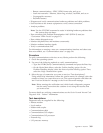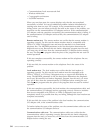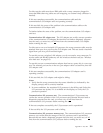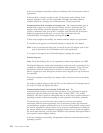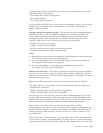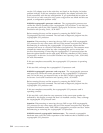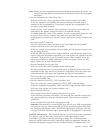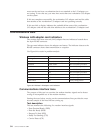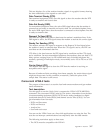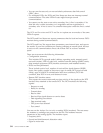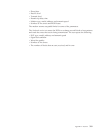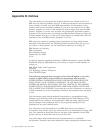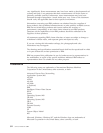This test displays five of the modem interface signals in a graphic format, showing
the time relationship of the signals to each other.
Data Terminal Ready (DTR)
Data terminal equipment (DTE) uses this signal to show the modem that the DTE
is ready to transmit and receive data.
Data Set Ready (DSR)
For nonswitched telephone lines, the active DSR signal shows that the modem is
powered-on and ready to transmit and receive data. For switched telephone lines,
the active DSR signal shows that the modem is connected to the telephone line and
is ready to transmit data.
Request To Send (RTS)
DTE uses this signal to activate or deactivate the modem’s modulator lines. If the
DSR signal is active, the RTS signal causes the modem to activate the carrier signal.
Ready For Sending (CTS)
The modem activates this signal in response to the Request To Send signal when
the modem is ready to transmit data. When the CTS signal is active, the DTE can
send data on the transmitted data line.
CTS delay is the time between the RTS signal active condition and the CTS signal
active condition. On most nonswitched telephone line modems, there are three CTS
delay options, ranging from 0 to 250 milliseconds (ms). Switched telephone line
modems, operating in half-duplex mode, are normally set for 150 to 250 ms of CTS
delay.
Carrier Detect (CD)
The modem uses this signal to show the DTE that the modem is receiving an
acceptable carrier signal.
Because of hardware limits on taking short frame samples, the carrier detect signal
might not be accurate. In this condition, an asterisk (*) takes the place of the
sample data. The status is still correct.
Concurrent LPDA-2 tests
The purpose of these tests is to test the local and remote modems and get modem
status information.
Test description
Use this option to run the Verify Link; it supports the LPDA-2 (VFYLNKLPDA)
command. The concurrent LPDA-2 tests let you retrieve information from the data
circuit-terminating equipment (DCEs). DCEs can be analog (modems) or digital
(combined data service units (DSUs) and channel service units (CSUs)). You can
get information from four tests:
v DCEs and line status
v DCEs and line test
v Analyze line
v Send and receive test
You can run the LPDA-2 tests on a line while applications are using the line. The
tests do not interrupt communications but temporarily slow the data transfer.
The following restrictions apply to these tests:
v The DCEs must be compatible with LPDA-2.
Appendix A. OS/400 317



